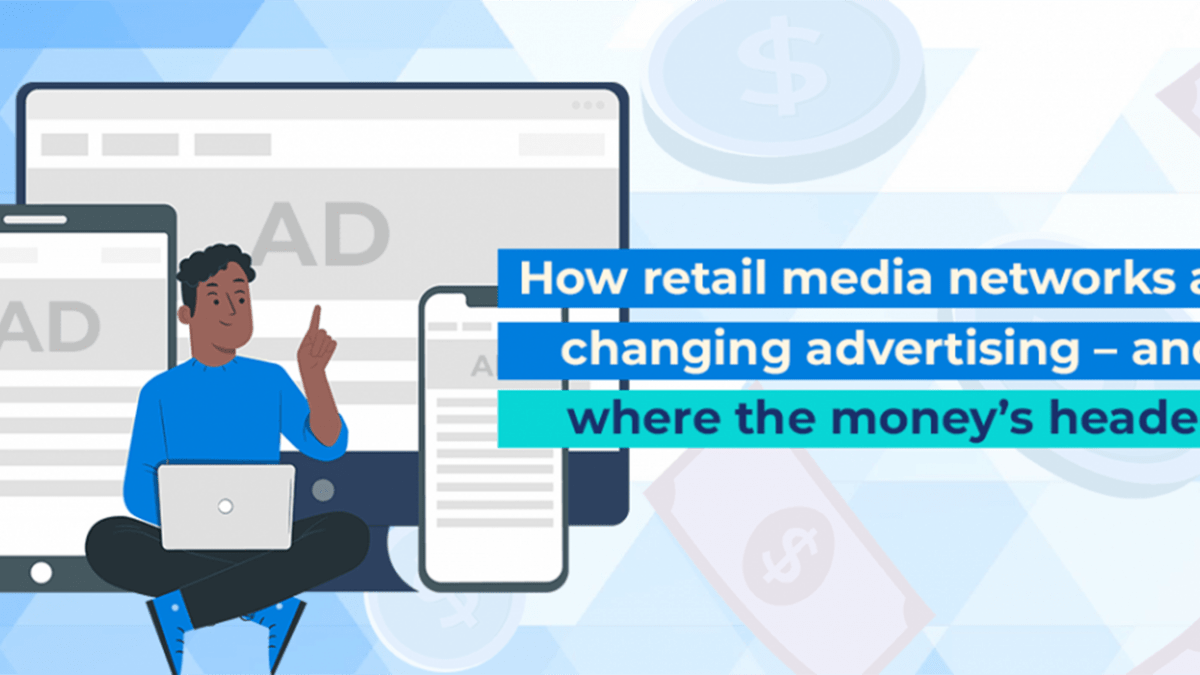
Attention Takes Centre Stage as the New Digital Ad Currency, but Doubt Remains
June 29, 2023
Mobile Commerce Next: The Race for Discovery
August 8, 2023
Size of the Prize
Retailer media is disrupting the advertising landscape as brands tap vast troves of purchase and loyalty data to better target customers – both on retailers’ own websites and apps as well as across broader digital channels, including CTV, digital out of home, display and social media.
WPP-owned GroupM forecasts retail media networks (RMNs) will pocket $126bn in advertising revenue this year and overtake TV ad revenues within five years.
Per McKinsey, the US retail media market alone is currently worth circa $45bn. The consulting firm forecasts high double-digit growth for the foreseeable future, with 73 per cent of US marketers planning to increase spend on retailer media over the next 12 months, on average allocating 10-15 per cent of their total ad budgets.
The single biggest factor in driving that shift, per the 150 marketers polled by McKinsey, is better return on ad spend, or ROAS. Plus, almost all of those advertisers (95 per cent) are willing to pay upwards of 10 per cent premiums for faster, more accurate reporting, measurement, attribution and data – presenting a multibillion dollar prize for retailers and tech partners that can deliver those tools.
Who's Who in Retail Media?
Amazon is the world’s largest retail media player, leveraging massive reach and terabytes of purchase and product search data to generate $37.7bn in ad revenues in 2022. The bulk of that ad revenue comes from its ‘off network’ business, i.e. using its shopper data to enable brands to retarget buyers across the broader Amazon ad network versus ‘on network’ revenues, i.e. brands paying to advertise on Amazon.com via banners and sponsored products.
But physical US retailers have made major gains in recent years after realising the huge margins available from media versus often low single digits on product sales. Walmart, Target, Kroger, Best Buy, CVS, Walgreens, Macy’s and Home Depot are among the biggest RMNs in the US, with online pure-plays including Instacart, Wayfair and Chewy building out increasingly sophisticated media platforms in a bid to grow both onsite and off-network ad revenues.
Some estimates put the number of RMNs in the US alone as north of 100.
Follow the Money
According to major US advertisers polled by peak body the ANA, search dollars are migrating into retail channels, with 80 per cent of advertisers stating paid search is the most important RMN channel. Onsite advertising was ranked second. That suggests Google will see its share erode. “Sixty per cent of all searches today are starting on commerce sites,” according to one advertiser interviewed by the ANA. “Traditional paid search is kind of a waste.”

But other channels are also under pressure from RMNs, according to Jack Myers, a US-based ‘media ecologist’ and founder of consulting firm MediaVillage.
“The losses that we’re seeing now in several of the major digital platforms, whether Snap, Twitter, others; the flat reporting that we’re seeing at Facebook, Google, is being heavily attributed to TikTok, which is certainly the case. But more so, it’s money shifting to the retail media category,” Myers told Mi3’s Retailer Media Next report.
He suggests TV networks are starting to feel similar pain.
“We’re seeing a real softness in the US network television upfront marketplace and in the continuing scatter markets [where advertisers hold back-upfront dollar commitments in a bid to get better value closer to real-time]. Much of that is also being attributed to TikTok. But my data shows that it is flowing for the first time from national television into retail media categories,” said Myers.
According to the ANA’s report, most retailer media spend is not incremental, but cannibalising existing budgets.
However, TV networks are now starting to see upside as brands use shopper data to better target buyers across broadcasters’ on-demand and ad-funded streaming channels. NBCU, for example, has struck a deal with Walmart Connect to enable retail media-powered ads across its live sports streaming.
Likewise digital out-of-home networks with signage close to physical retail centres could see revenue growth as retailers push for omnichannel media dollars.
Social media channels are also a conduit for retargeting using shopper and loyalty data – with Walmart, Unilever and TikTok last month completing a test run. TikTok is also working on retailer-powered ads with Sainsbury’s and Tesco in the UK.
However the channel mix shifts – and in some cases converges – advertisers expect to allocate a greater share of their budgets into retailer media networks over the next twelve to twenty four months. According to the ANA’s research, six in ten marketers polled expect to be using a larger pool of RMNs within two years and seven in ten said they expect to be spending more or significantly more than they are today.
Problems to Solve
Measurement, transparency and a lack of standardisation are standout issues raised by advertisers when it comes to retail media.
The challenge for brands is that as the number of retail media networks grows, so does the number of different reporting, measurement and attribution methodologies and systems. There is no measurement standard that enables them to accurately compare investments with one RMN versus another. Which means navigating dozens of retail media walled gardens and reporting ‘black boxes’ in the US alone – and trying to stitch everything back together.

Unilever’s head of digital, media and commerce, Soumya Donkada, earlier this year flagged the lack of standardisation within retail media as a key issue facing brands. The world’s third largest advertiser is also seeking help from third parties to help solve attribution and better understand the factors beyond advertising that influence retail sales. Otherwise there is a risk retailers claim credit for sales that may have happened anyway.
The IAB is working on RMN measurement standards in Europe and the US – and some retailers have floated standardisation frameworks in a bid to corral industry.
But whether the biggest retailers have sufficient incentive to collaborate on standards, given the revenue growth they are booking while operating as walled gardens, is currently an open question.
GroupM’s forecast of a $178bn market by 2028, with retail media at that point set to take 15 per cent of all global ad dollars, suggests advertisers are willing to put in the extra legwork and accept the ‘black box’ reporting.
Given retailers largely control their distribution channels, what choice do brands really have?
